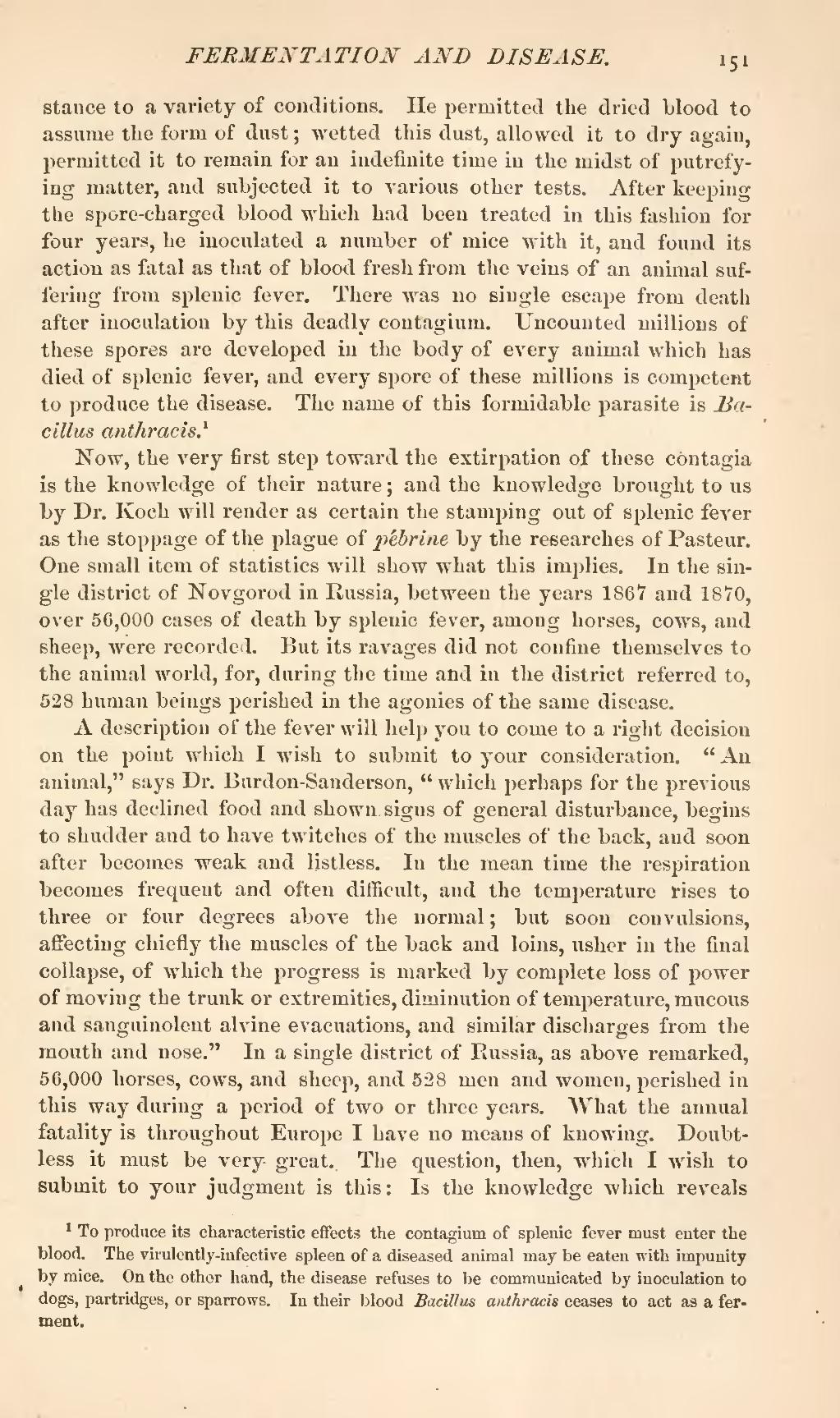stance to a variety of conditions. He permitted the dried blood to assume the form of dust; wetted this dust, allowed it to dry again, permitted it to remain for an indefinite time in the midst of putrefying matter, and subjected it to various other tests. After keeping the spore-charged blood which had been treated in this fashion for four years, he inoculated a number of mice with it, and found its action as fatal as that of blood fresh from the veins of an animal suffering from splenic fever. There was no single escape from death after inoculation by this deadly contagium. Uncounted millions of these spores are developed in the body of every animal which has died of splenic fever, and every spore of these millions is competent to produce the disease. The name of this formidable parasite is Bacillus anthracis.[1]
Now, the very first step toward the extirpation of these contagia is the knowledge of their nature; and the knowledge brought to us by Dr. Koch will render as certain the stamping out of splenic fever as the stoppage of the plague of pébrine by the researches of Pasteur. One small item of statistics will show what this implies. In the single district of Novgorod in Russia, between the years 1867 and 1870, over 56,000 cases of death by splenic fever, among horses, cows, and sheep, were recorded. But its ravages did not confine themselves to the animal world, for, daring the time and in the district referred to, 528 human beings perished in the agonies of the same disease.
A description of the fever will help you to come to a right decision on the point which I wish to submit to your consideration. "An animal," says Dr. Burdon-Sanderson, "which perhaps for the previous day has declined food and shown, signs of general disturbance, begins to shudder and to have twitches of the muscles of the back, and soon after becomes weak and listless. In the mean time the respiration becomes frequent and often difficult, and the temperature rises to three or four degrees above the normal; but soon convulsions, affecting chiefly the muscles of the back and loins, usher in the final collapse, of which the progress is marked by complete loss of power of moving the trunk or extremities, diminution of temperature, mucous and sanguinolent alvine evacuations, and similar discharges from the mouth and nose." In a single district of Russia, as above remarked, 56,000 horses, cows, and sheep, and 528 men and women, perished in this way during a period of two or three years. What the annual fatality is throughout Europe I have no means of knowing. Doubtless it must be very great. The question, then, which I wish to submit to your judgment is this: Is the knowledge which reveals
- ↑ To produce its characteristic effects the contagium of splenic fever must enter the blood. The virulently-infective spleen of a diseased animal may be eaten with impunity by mice. On the other hand, the disease refuses to be communicated by inoculation to dogs, partridges, or sparrows. In their blood Bacillus anthracis ceases to act as a ferment.
